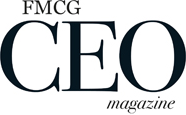Jay Topham explores what the energy drink sector can learn from supplement brand innovators to turbo-charge Gen Z engagement
The energy drink sector has been omni-present for some time now, from the original Red Bull innovation in the 80s, through to modern day supermarket aisles stacked high with options, this category is one we are all pretty familiar with.
Yet the dynamics of the market are shifting, particularly in engaging younger consumers. Studies reveal that Gen Z, a sober-conscious generation, is increasingly choosing energy drinks during social outings. But while the health-conscious partiers might be swapping alcohol for caffeine, that is only one social occasion they find themselves in. For a generation that socialises through a wider breadth of occasions than ever before, the challenge is that in most social situations, energy drinks are no longer top-of-mind for Gen Z.

Compounding this challenge, today’s young consumers prioritise natural ingredients. They are acutely aware of the health risks associated with additives and sugar, demanding higher product standards. This awareness has sparked a rise in healthier alternatives – think electrolyte sachets, meal replacements and vitamin-infused drinks. These options reflect the values of a generation that approaches consumption thoughtfully and with purpose.
The evolution of the market is backed up by challenger brands like PerfectTed, a matcha-based energy drink which has quickly become the UK’s fastest-growing brand in its category with a natural energy boost, minus the crash.
We collaborate with supplement brands, from probiotics to collagen, this growing category is packed with competition. On the back of a few compelling projects in this sector, working with health-conscious consumers, we began drawing parallels between the supplements category and the drink space.
Interestingly, energy drinks can be dated as far back to 1962 in Japan where Taisho pharmaceuticals produced Lipovitan D, a herbal ‘energising tonic’ marketed towards truck drivers and factory workers who needed to stay awake for long shifts. Today, supplement brands compete for prime shelf space in their users’ daily routines, and as younger audiences make considered choices about which tablets or sachets to adopt, brands must work hard to find creative and compelling ways to communicate their product.
The rituals of a product
One major hurdle for supplement brands is embedding their products into users’ daily routines. For the health space, this involves more than just product uptake; it’s about understanding how to integrate offerings seamlessly into consumers’ lives. Success hinges on brands understanding the lifestyle decision users make, asking questions like when do they wake up? How do they travel? What do they eat? How should we package the product? Can we reward adoption? This deeper strategic understanding of users helps supplement brands to package and present their product in a way that works more effortlessly.
This strategic insight has led to creative packaging solutions that facilitate effortless interactions with consumers. A standout example is Moju, which packages its ginger health shots in medicine-style bottles complete with a dose-marking system. This design not only emphasises health benefits but also simplifies storage and encourages regular use, effectively catering to busy, health-conscious consumers seeking accessible solutions.
The intuitive design of Moju’s packaging (below) demonstrates a deep understanding of user needs and preferences, enhancing their overall experience. By aligning their offerings with consumer expectations, brands can cultivate long-term relationships that drive repeat purchases.

Harnessing customer stories
In the supplement market, encouraging customers to share their experiences is a common practice. Testimonials and user-generated reviews are crucial for many brands. However, we often advise clients in the supplements sector to deviate from these conventional approaches, to stand out in a crowded marketplace.
Conversely, this notion of understanding how people use and benefit from your product could aid the energy drink category. Part of the challenge for energy drink brands is occasions – people knowing when to use the product. For example, if a young person is in a cafe, they will likely use coffee for energy, and if they are in the supermarket presented with lots of options, they are likely to pick out a healthy solution. Sharing user stories that highlight the value of energy drinks could help shift perceptions and broaden appeal.
Imagine a creative professional who relies on energy drinks to power through tight deadlines or a runner who grabs one post-jog before diving into a hectic workday. By amplifying these narratives, brands can create new contexts for consumption, particularly as this generation increasingly relies on reviews or word of mouth to inform their purchasing decisions. By tapping into relatable experiences, energy drink brands can effectively position themselves as viable choices in various scenarios.
A great example of this is Ritual. The probiotics company brands their consumers ‘sceptics’, which has informed a clever strapline: ‘for sceptics, by sceptics’. This acknowledges the need to be convinced about products like this and uses converted consumers to do the hard work in convincing you.

Go all-in on innovation
Innovation is the lifeblood of the supplement market, whether through cutting-edge probiotics or exciting hydration solutions. This relentless pursuit of novelty drives compelling storytelling. Brands must articulate their unique benefits and ensure this focus permeates every consumer touchpoint.
Consider Face Gym, which has successfully merged skincare with fitness, marketing itself as a “workout for your face.” This innovative positioning influences their branding, packaging and service offerings. Energy drink brands could benefit from a similar focus – narrowing their target audience and honing in on specific user needs. By innovating not just in product formulation but also in branding and marketing strategies, brands can resonate more deeply with health-conscious consumers, making their offerings more relatable and compelling.
The challenges faced by supplement brands offer valuable insights for the energy drink sector. Both markets revolve around functionality, and by adopting successful communication strategies from the supplement industry, energy brands could forge stronger connections with Gen Z. By emphasising health-focused innovations and refining their brand messaging, these companies can pave the way for enhanced consumer engagement and, ultimately, increased consumption.
Embracing change
As the market continues to evolve, those who adapt swiftly and thoughtfully will thrive and remain relevant. By meeting consumers where they are at, without disregarding the obvious desire for more health-led solutions, energy drink brands can secure their place in the lives of modern consumers, building lasting rituals. The energy drink sector’s future lies in its ability to embrace change, leverage consumer insights and foster a culture of innovation that resonates with health-conscious lifestyles. As brands strive to stay ahead, they must remain vigilant in observing consumer behaviours, navigating a dynamic landscape and finding more reasons for people to drink energy.
Jay Topham is the co-founder and Creative Director at Unfound Studio




